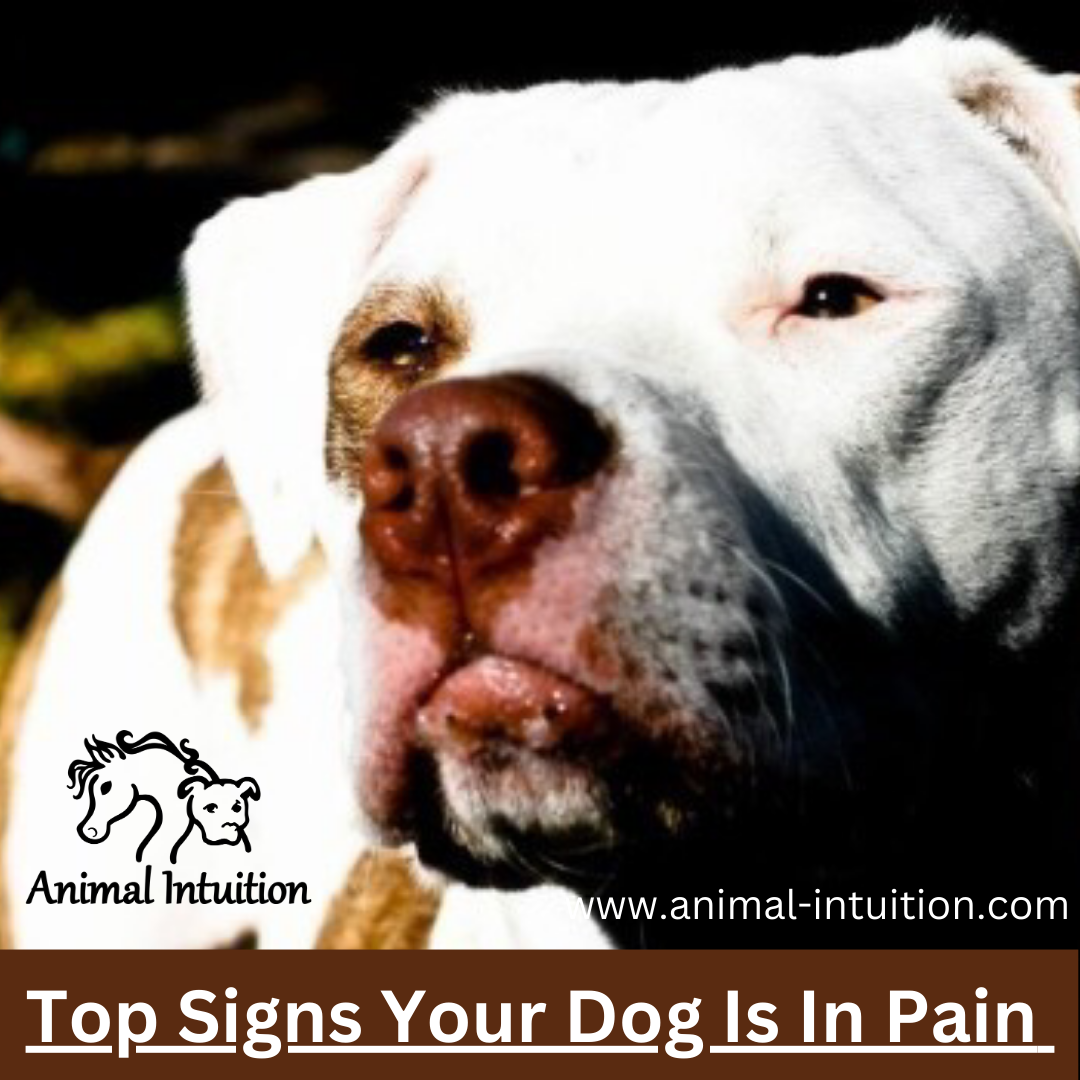When we think of sick or injured dogs, usually the picture that comes to mind is an animal who is limping or visibly in distress. But the reality is, unless the injury or illness is severe, we may not even know when our dogs are experiencing discomfort. That’s because animals are experts at hiding pain and discomfort!
Why Do Dogs Hide Pain?
Masking signs of pain is a self-protecting behavior. No matter how domesticated our dogs have become, they’re still animals with instinctual behaviors. In the wild, injured or sick animals learn how to hide their ailments and injuries because they will be perceived as weak or vulnerable.
Dogs can feel physical pain for many of the same reasons humans do; injuries, after surgeries, and degeneration as their body ages. Dogs show pain in many different ways and if we don’t know what we’re looking for, we may not catch what is happening and be able to help them. Often, during sessions for dog massage, Reiki or animal communication, pain indicators come up, so I thought I’d share them here with you. Here’s a quick list of common pain signals you might see in your dog:
- Shaking
- Panting
- Licking/chewing / yawning
- Restless
- Cranky
- Excessive Drinking/ Loss of Appetite
Shaking/ Trembling
A dog may tremble or shake when they are in pain, similar to when they shiver from being cold. You can feel their ears and paws to test if they are cold, as these areas are often indicators. If so, take measures to warm them up. If your dog is shaking but doesn’t seem to be cold, it’s a good indicator that they are experiencing pain.
Panting/ Licking/ Calming Signals
Many times when a dog is in pain or distress, they will use calming signals. One of the most common calming signals seen in dogs is panting or excessive licking. If your dog is panting while at rest, yawning excessively, obsessively licking or grooming, he or she may be in pain. Panting and licking are instinctive behaviors that occur when a dog is trying to distract or calm himself from the pain he or she is feeling.
Restlessness
We all know that pain can make it can be difficult to get comfortable. You might notice your dog having a hard time sleeping, spending a lot of time tamping his bed, pacing, walking around the house unable to settle down, or whimpering while at rest.
Cranky or Grumpy Disposition
If your normally happy and laid-back dog is starting to growl, snap, or show a change in attitude, pain may be the reason. Think about it. If you’re in pain you may be more guarded and the last thing you want to do is be touched or bothered. The same is true for dogs! A dog who is injured or in pain may act out because they’re afraid you will hurt them or touch the painful area. Many times, behavioral change and attitude is one of the first signs that pet parents see . If your dog is acting out of character for any reason, you should rule out any medical issues as soon as you can.
Excessive Drinking/ Appetite Changes
A loss of appetite and excessive drinking are also common symptoms of hidden pain. They will naturally fast to heal or the pain itself may cause nausea. Also, difficulty eating can indicate dental or sinus pain as well as general malaise and excessive drinking can be a sign of problems in the kidneys, dehydration, diabetes, liver disease, or a list of other possible causes.

How Your Dog Tells You He’s In Pain
What To Do If You Think Your Dog Is In Pain
If you suspect that your dog has a painful condition, please seek advice from your veterinarian. Blood work and x-ray imaging can be performed to determine the cause of the pain. Most veterinarians will prescribe some sort of anti-inflammatory or short-term steroid course to see if reducing inflammation will help. However, these medications are not ideal for long-term usage so it’s also an excellent idea to implement other health practices to help keep your pet comfortable.
How Canine Massage Helps A Dog Manage Pain
Canine massage will help manage a dog’s pain by stimulating their mind and body in different ways. At the very foundation of a dog massage for any reason; it will increase circulation. Which is the main way nutrients are transported and toxins removed throughout the body. This vital role helps the body manage inflammation and gives it strength to heal. Dog massage releases their “feel good” hormones such as oxytocin. As a result, it helps relax them. It’s been proven that bodies heal best in a relaxed state. And can have a soothing effects on tired and sore areas. Other physical benefits include lubricating joints, increasing/maintaining range of motion, and relieving tight muscles. In addition, canine massages help promote a positive disposition. This increases their quality of life and makes the pain and degeneration more manageable.
A Holistic Wellness Plan
Take a multi-pronged approach to your pet’s health. It is a beautiful and loving way to make sure that your furry family member is getting the very best care and optimizing their quality of life. Definitely maintain your regular veterinary visits. And incorporate other steps to make sure their physical and emotional health are attended to in a whole body approach. Contact Animal Intuition for more information about canine massage therapy, Reiki, Animal Communication, and supportive products including CBD oil, supplements and other essential oils to help compliment your dog’s wellness plan.


Comments
Pingback: CBD Oil For Pets 101 - Animal Intuition
Pingback: Top 7 ways To Support Senior Dogs - Animal Intuition
Pingback: Dog’s with Cancer: Series Introduction - Animal Intuition